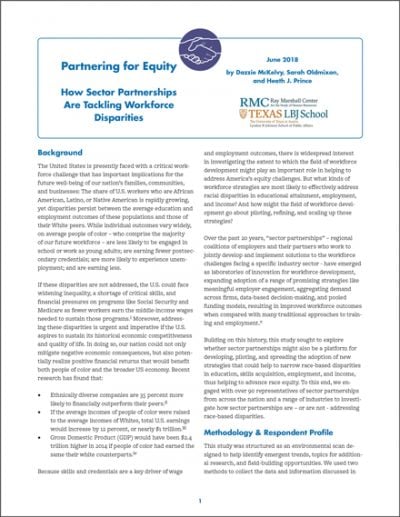Summary
People of color represent the majority of America’s future workforce. Yet, when compared to their white peers, these individuals are generally less likely to be engaged in school or work as young adults; are earning fewer postsecondary credentials and smaller paychecks; and are more likely to experience unemployment.
One promising channel for addressing America’s equity challenges? Workforce development, with its focus on building skills and credentials. In particular, sector partnerships — regional coalitions of employers and their partners that work together to solve specific industry challenges — have emerged as effective laboratories of innovation in this field.
This report explores the role that sector partnerships can play in narrowing race-based disparities in education, skills acquisition, employment and income. It utilizes input from more than 90 individuals representing sector partnerships across the nation and in a range of industries. Readers will learn what — if anything — these partnerships are doing to address race-based disparities and how workforce development practitioners and supporters can help accelerate their success.



